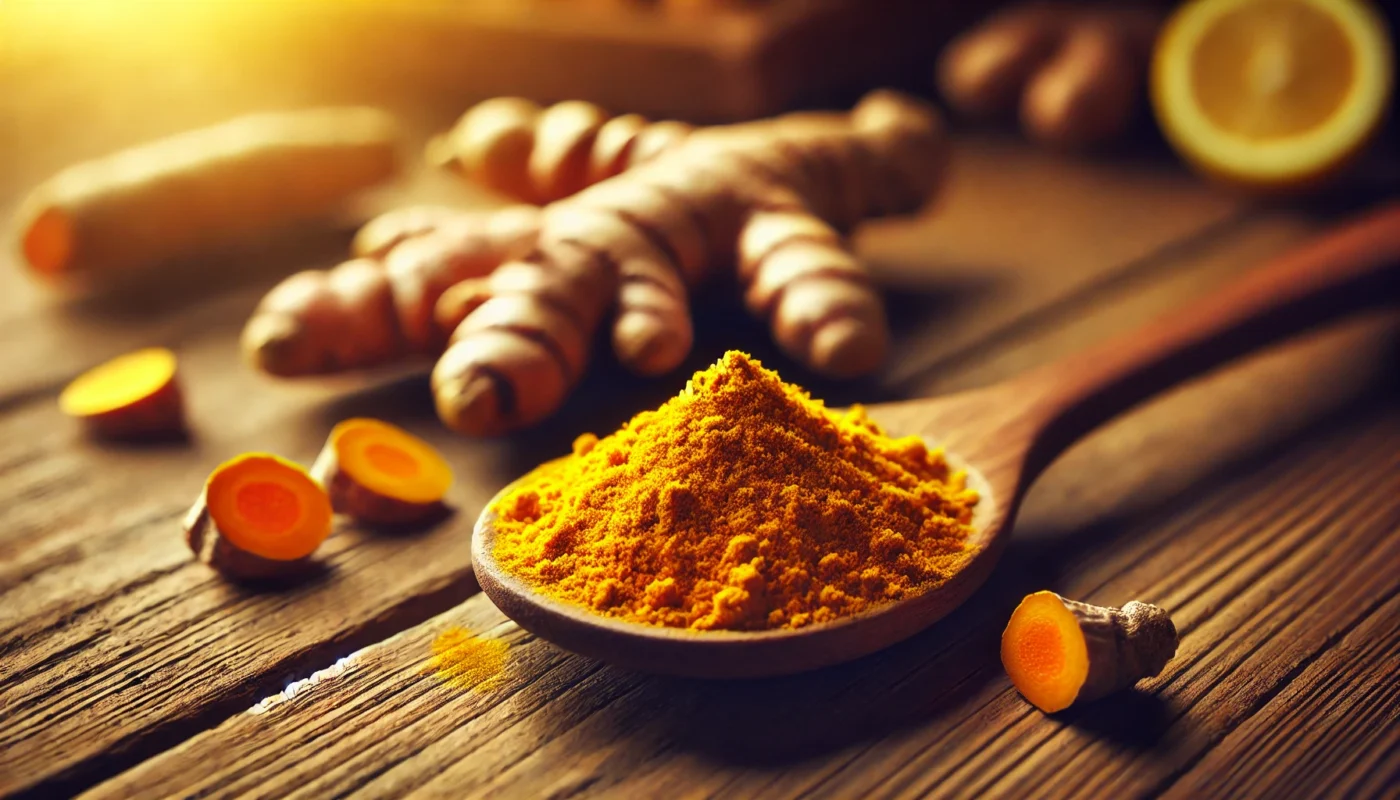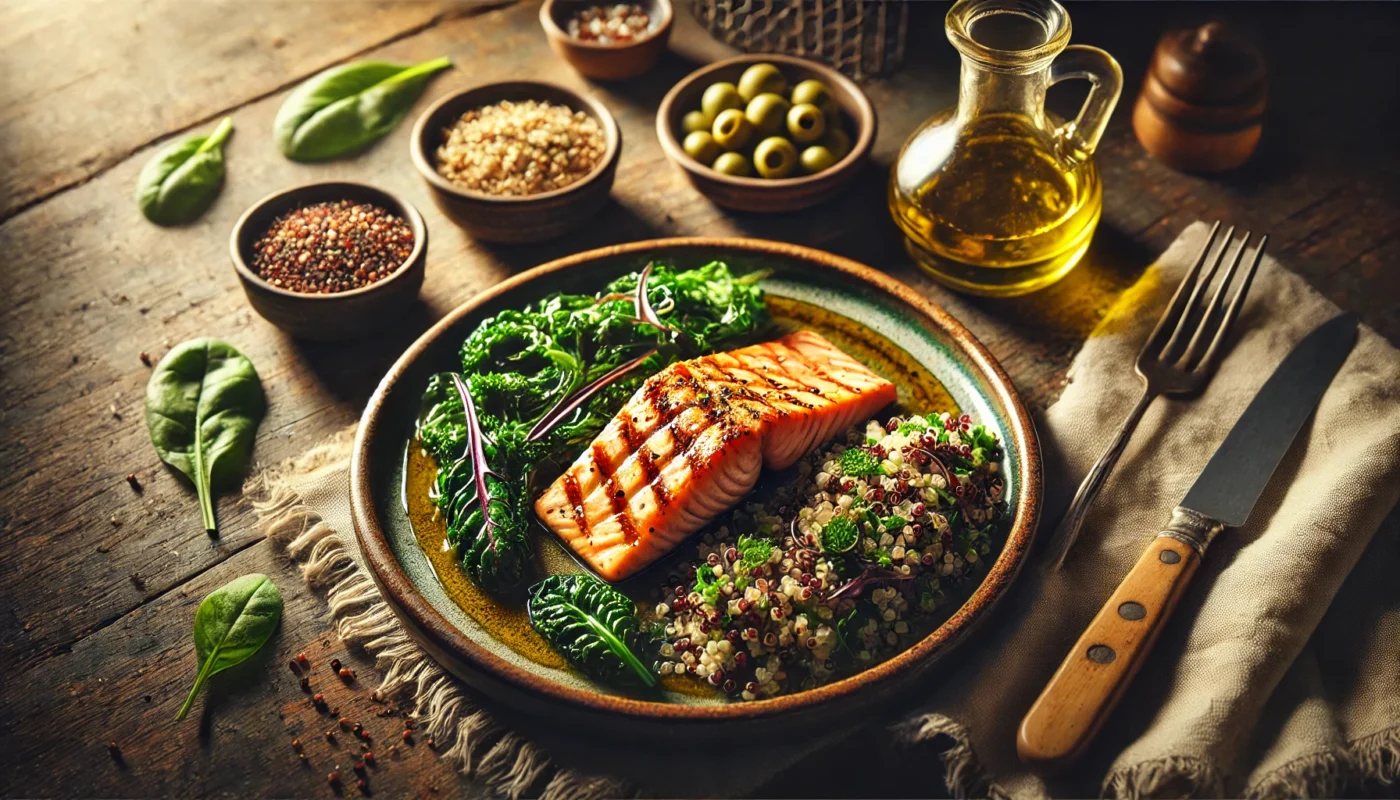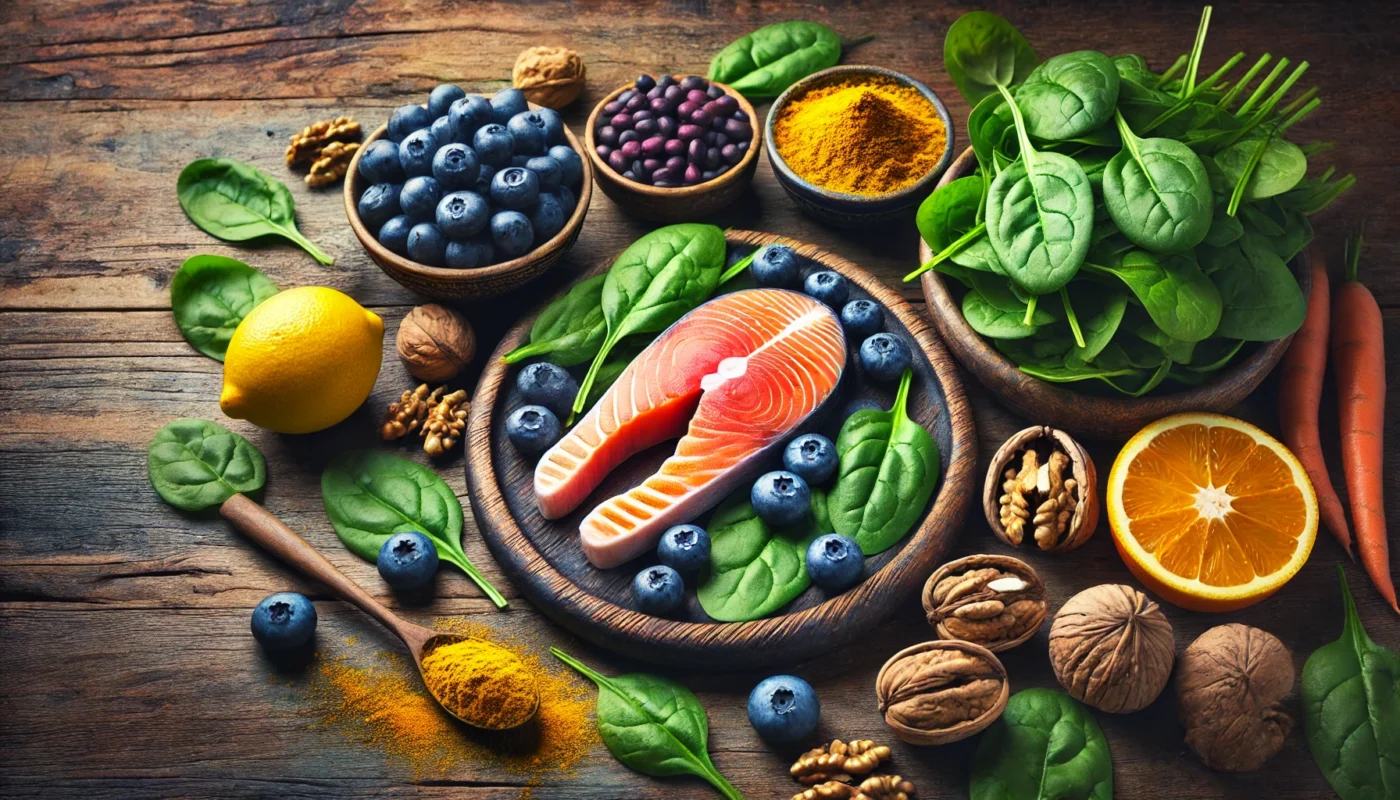In this article, we delve into the science behind foods that help with pain, exploring both traditional and holistic perspectives. Armed with this knowledge, you can make informed choices that support your health journey.
You May Also Like: Walking and Its Impact on Inflammation
Understanding the Role of Diet in Pain Management
The relationship between diet and pain is a subject of extensive research, often highlighting the anti-inflammatory effects of certain foods. Chronic inflammation is a known contributor to pain, and adopting an anti-inflammatory diet can significantly mitigate these effects. The Mayo Clinic, a reputable source in the medical community, emphasizes the benefits of anti-inflammatory foods in reducing pain, especially for conditions like arthritis.
The Science Behind Diet and Inflammation
Scientific studies have shown that dietary choices can directly impact inflammatory processes in the body. Inflammation, a natural immune response, can become chronic due to poor dietary habits, leading to pain. By understanding these mechanisms, one can choose foods that help regulate inflammation.
Anti-Inflammatory Foods: A Closer Look
Anti-inflammatory foods are often rich in antioxidants and polyphenols. These compounds help neutralize free radicals, reducing oxidative stress and subsequent inflammation. By incorporating such foods, individuals can potentially lower their risk of chronic pain conditions.
The Influence of Processed Foods
Processed foods, often laden with sugars and unhealthy fats, can exacerbate inflammation. Understanding the negative impact of these foods on pain can motivate individuals to make healthier dietary choices that focus on whole, unprocessed ingredients.
Dietary Patterns and Pain Perception
The way we eat—our dietary patterns—can influence how we perceive pain. Diets high in sugar and fat can heighten pain sensitivity, while balanced, nutrient-rich diets can help modulate pain perception. This underscores the importance of a holistic dietary approach.
Integrating Nutritional Knowledge
With a wealth of information on the connection between diet and pain, integrating this knowledge into daily habits is crucial. This involves not only choosing the right foods but also understanding their role in a broader context of health and wellness.

Foods That Reduce Pain
Incorporating foods known for their pain-relieving properties into your diet can make a noticeable difference. These foods are rich in compounds that combat inflammation and promote healing.
Omega-3 Fatty Acids
Omega-3 fatty acids, found in fatty fish like salmon, sardines, and mackerel, are renowned for their anti-inflammatory properties. These essential fats can decrease the production of inflammatory cytokines and have been associated with reduced joint pain, stiffness, and swelling.
Omega-3s also contribute to joint and ligament health by supporting collagen production and reducing wear on connective tissues. Learn more about the essential nutrients that strengthen ligaments and joints.
Sources of Omega-3s
Beyond fish, omega-3s can be found in plant sources like flaxseeds and walnuts. Incorporating these into your diet can provide a versatile approach to obtaining these beneficial fats, catering to various dietary preferences.
Mechanisms of Action
Omega-3s work by modulating the production of inflammatory molecules in the body. They influence the balance of eicosanoids, which are signaling molecules that play a crucial role in the inflammatory response.
Clinical Evidence
Numerous studies have highlighted the efficacy of omega-3s in reducing pain associated with inflammatory conditions. These findings support the inclusion of omega-3-rich foods in diets aimed at pain management.
Fruits and Vegetables
Colorful fruits and vegetables are packed with antioxidants that fight inflammation. Berries, cherries, oranges, and leafy greens like spinach and kale are particularly effective. These foods provide vitamins C and E, which are crucial for reducing oxidative stress and inflammation.
Certain fruits and vegetables also help reduce bloating and digestive discomfort, making them a great addition to an anti-inflammatory diet. Discover how specific foods can naturally relieve bloating and improve digestion.
The Power of Polyphenols
Polyphenols, abundant in fruits and vegetables, offer significant anti-inflammatory benefits. These compounds help reduce the risk of chronic diseases and pain by mitigating oxidative damage.
Seasonal Choices
Eating a variety of seasonal fruits and vegetables ensures a diverse intake of nutrients. This approach not only supports inflammation reduction but also enhances overall dietary enjoyment and sustainability.
The Role of Fiber
Fiber, abundant in fruits and vegetables, plays a role in maintaining gut health, which is intricately linked to inflammation and pain. A healthy gut can contribute to overall pain reduction.
Additionally, a fiber-rich diet helps manage fluid retention and swelling, particularly in the lower extremities. Discover how specific foods can help reduce foot swelling and improve circulation.
Whole Grains
Whole grains such as brown rice, quinoa, and oats are high in fiber, which can help lower inflammation. Unlike refined grains, whole grains maintain their nutrient-rich bran and germ, providing more anti-inflammatory benefits.
The fiber in whole grains also plays a vital role in gut health by supporting the colon and reducing inflammation in the digestive tract. Learn more about how certain foods can help combat colon inflammation and improve overall well-being.
Nutritional Composition
Whole grains are rich in vitamins, minerals, and phytonutrients that support overall health. Their complex structure provides sustained energy and promotes a balanced inflammatory response.
Comparisons with Refined Grains
Refined grains, stripped of their nutrients, often contribute to inflammation. Understanding this difference emphasizes the importance of choosing whole grains for pain management.
Incorporating Whole Grains
Incorporating whole grains into meals can be as simple as swapping white rice for brown rice or choosing whole grain bread. These small changes can have significant impacts on inflammation and pain.
Nuts and Seeds
Almonds, walnuts, flaxseeds, and chia seeds are excellent sources of anti-inflammatory omega-3s and antioxidants. Regular consumption of these can support joint health and reduce pain associated with conditions like arthritis.
Incorporating these nutrient-dense foods into your diet can be an effective strategy for managing joint inflammation. Learn about additional dietary strategies that help relieve joint inflammation and support mobility.
Nutrient Density
Nuts and seeds are nutrient-dense, providing essential fatty acids, vitamins, and minerals. Their consumption can support various aspects of health, from cardiovascular to joint health.
Versatile Usage
Nuts and seeds can be easily incorporated into meals or snacks. Whether added to salads, smoothies, or consumed on their own, they offer a convenient way to boost anti-inflammatory intake.
Portion Control
While beneficial, nuts and seeds are calorie-dense. Practicing portion control ensures their health benefits without excessive calorie intake, maintaining a balanced diet.
Anti-Inflammatory Diets: Insights from Mayo Clinic
The Mayo Clinic’s anti-inflammatory diet emphasizes the importance of whole, unprocessed foods and minimizing the intake of processed and sugary foods that can exacerbate inflammation.
This approach not only supports pain relief but also plays a crucial role in strengthening the immune system. Learn more about effective ways to boost immunity and support overall health.
Core Principles
The core principles of the Mayo Clinic’s diet focus on balance, variety, and nutrient density. These principles are designed to create a sustainable dietary approach that supports long-term health.
Personalized Approach
The diet can be adapted to individual needs, taking into account personal preferences, intolerances, and specific health goals. This personalized approach enhances adherence and effectiveness.
Beyond Food: Lifestyle Integration
The Mayo Clinic advocates for integrating dietary changes with other lifestyle modifications. This holistic approach ensures comprehensive health benefits, addressing both physical and psychological aspects of pain.

Foods That Ease Pain: Practical Tips
In addition to incorporating specific foods into your diet, there are practical strategies you can employ to maximize their benefits. Many natural foods can also provide relief from general aches and body discomfort. Discover effective remedies that help soothe body aches and chills.
Consistency is Key
To experience the full benefits of pain-relieving foods, consistency is crucial. Integrating these foods into your daily meals ensures a steady supply of anti-inflammatory compounds, which can have cumulative benefits over time.
Establishing Routines
Creating dietary routines can help maintain consistency. Planning meals and snacks around anti-inflammatory foods can integrate them seamlessly into daily life, reinforcing their benefits.
Overcoming Barriers
Identifying and addressing barriers to consistency, such as time constraints or lack of availability, is essential. Solutions like meal prepping or choosing easy-to-prepare foods can support sustained dietary changes.
Long-Term Commitment
Consistency requires a long-term commitment to health. Understanding the gradual nature of dietary benefits can motivate sustained adherence, leading to lasting pain relief.
Balance and Variety
A diverse diet rich in various nutrients is essential for optimal health. Balance your intake of different anti-inflammatory foods to prevent nutritional deficiencies and ensure a comprehensive approach to pain management.
Ensuring a variety of immune-boosting foods in your diet can also help the body combat inflammation more effectively. Learn about the best foods to strengthen your immune system and enhance overall well-being.
Nutrient Synergy
Different foods provide unique nutrients that work synergistically to reduce inflammation. Embracing a varied diet ensures that these synergistic effects are maximized.
Seasonal and Local Options
Choosing seasonal and local produce can enhance dietary variety and support environmental sustainability. This approach also introduces new flavors and textures, enriching the eating experience.
Addressing Nutritional Gaps
Regularly reviewing and adjusting dietary choices can help address any nutritional gaps. This proactive approach ensures that the diet remains balanced and effective in managing pain.
Mindful Eating
Practicing mindful eating can enhance your dietary efforts. This involves paying attention to hunger cues, savoring each bite, and choosing foods that nourish your body.
Techniques for Mindful Eating
Techniques such as slowing down during meals and focusing on the sensory experience of eating can foster mindfulness. These practices enhance the connection between diet and health.
Emotional Connections
Recognizing the emotional aspects of eating can aid in making healthier choices. Mindful eating encourages a positive relationship with food, which can support pain management.
Enhancing Satisfaction
Mindful eating can increase satisfaction and reduce overeating. By fully experiencing each meal, individuals can achieve greater contentment and better manage their nutritional intake.

Anti-Inflammatory Foods and Joint Health
Joint pain, whether due to arthritis or injury, can significantly impact quality of life. An anti-inflammatory diet can alleviate symptoms and promote joint health.
Foods for Joint Inflammation
Certain foods have been shown to have particular benefits for joint health and inflammation.
Turmeric
Turmeric contains curcumin, a powerful anti-inflammatory compound. It has been widely studied for its potential to reduce joint pain and swelling, especially in arthritis patients.
Beyond joint health, turmeric has also been recognized for its ability to alleviate stomach inflammation and digestive distress. Learn more about effective remedies for managing stomach inflammation naturally.
Enhancing Bioavailability
Curcumin’s bioavailability can be enhanced by consuming it with black pepper or fats. This increases its absorption, maximizing its anti-inflammatory effects.
Culinary Uses
Incorporating turmeric into daily meals can be done through curries, teas, or smoothies. This versatility allows for creative and flavorful ways to benefit from its properties.
Scientific Support
Research supports curcumin’s efficacy in reducing inflammation and pain. Its potential as a natural remedy makes it a popular choice for those seeking alternative pain relief.
Ginger
Ginger possesses anti-inflammatory and analgesic properties. It can help reduce pain and stiffness in the joints, making it a valuable addition to a pain-relief diet.
Additionally, ginger is widely used to soothe digestive discomfort and combat stomach inflammation. Explore a range of foods that can help ease stomach inflammation and promote digestive health.
Forms and Preparations
Ginger can be consumed fresh, dried, or as a supplement. Each form offers unique benefits, allowing for flexible incorporation into a pain management regimen.
Culinary Applications
Adding ginger to meals, teas, or desserts can enhance flavor while providing health benefits. Its spicy and aromatic qualities make it a versatile ingredient.
Research Findings
Studies indicate ginger’s effectiveness in reducing symptoms of osteoarthritis and other inflammatory conditions. Its natural anti-inflammatory properties make it a beneficial dietary addition.
Olive Oil
Extra virgin olive oil is rich in oleocanthal, a compound that acts similarly to non-steroidal anti-inflammatory drugs (NSAIDs). Incorporating olive oil into your diet can help reduce inflammation and pain.
This anti-inflammatory effect extends to reducing swelling and fluid retention in the body, making olive oil a valuable dietary choice. Explore additional strategies to help minimize swelling naturally.
Choosing Quality Olive Oil
Selecting high-quality, extra virgin olive oil ensures maximum oleocanthal content. Cold-pressed oils retain more beneficial compounds, providing superior anti-inflammatory benefits.
Culinary Versatility
Olive oil can be used in cooking, dressings, and dips. Its flavor profile complements various cuisines, making it easy to include in a health-conscious diet.
Health Benefits Beyond Pain
Beyond pain relief, olive oil supports cardiovascular health, making it a valuable addition to any diet. Its holistic benefits enhance overall wellbeing.
Non-Inflammatory Diet for Arthritis
A non-inflammatory diet specifically tailored for arthritis focuses on reducing foods that trigger inflammation and increasing intake of those that fight it. This includes avoiding processed foods, red meat, and refined sugars while embracing a diet rich in vegetables, fruits, lean proteins, and healthy fats.
For those with joint pain, bursitis relief strategies can complement dietary changes to further reduce discomfort. Learn about practical approaches to managing bursitis through diet and lifestyle.
Identifying Trigger Foods
Understanding which foods exacerbate arthritis symptoms is key to managing the condition. Eliminating these triggers can significantly reduce inflammation and pain.
Embracing a Plant-Based Focus
A plant-based focus in the diet can provide ample anti-inflammatory compounds. Emphasizing fruits, vegetables, and legumes supports joint health and overall wellness.
Tailoring the Diet
Personalizing the diet to suit individual preferences and tolerances enhances adherence. This tailored approach ensures that dietary changes are both effective and sustainable.

Foods for Pain Relief: A Holistic Approach
Embracing a holistic approach to pain management involves looking beyond just dietary changes. Lifestyle factors such as physical activity, stress management, and adequate sleep also play crucial roles in pain relief.
Exercise and Movement
Regular physical activity can help reduce pain by increasing endorphins, improving circulation, and strengthening muscles. Activities like yoga and swimming are particularly beneficial for joint health.
Certain dietary choices, like reducing inflammatory food triggers, can also support joint mobility. Learn how specific foods, including avocados, may influence joint pain and inflammation.
Tailored Exercise Programs
Tailoring exercise programs to individual needs and abilities ensures effectiveness and safety. Personalized routines can address specific pain areas and enhance overall mobility.
The Role of Flexibility
Incorporating flexibility exercises, such as stretching and yoga, can enhance joint function and reduce stiffness. These practices complement cardiovascular and strength training for comprehensive benefits.
Overcoming Barriers to Exercise
Addressing common barriers to exercise, such as time constraints or physical limitations, is essential. Solutions like short, frequent sessions or adaptive equipment can facilitate regular activity.
Stress Management
Chronic stress can exacerbate inflammation and pain. Incorporating stress-reduction techniques such as meditation, deep breathing, and mindfulness can complement dietary efforts in managing pain.
Managing stress is also crucial for maintaining digestive health, as stress can directly impact the gastrointestinal tract. Explore natural remedies that support a healthy GI system and reduce inflammation.
Techniques for Stress Reduction
Techniques such as guided imagery, progressive muscle relaxation, and journaling can effectively reduce stress. These practices help lower cortisol levels, mitigating their impact on inflammation.
Building Resilience
Building resilience through stress management enhances overall health and pain tolerance. Developing coping strategies for stress can improve both mental and physical wellbeing.
Integrating Relaxation into Daily Life
Incorporating relaxation practices into daily routines can make stress management more accessible and sustainable. Regular practice ensures lasting benefits for pain management.
Sleep and Recovery
Quality sleep is essential for recovery and pain management. It allows the body to repair and regenerate, reducing the perception of pain.
Certain nutrient-rich foods can enhance the body’s ability to recover and fight off illness during rest. Learn about healing foods that support the immune system and promote recovery.
Sleep Hygiene Practices
Adopting sleep hygiene practices, such as maintaining a regular sleep schedule and creating a restful environment, can enhance sleep quality. These habits support optimal recovery.
The Impact of Sleep Disorders
Addressing sleep disorders, such as insomnia or sleep apnea, is crucial for effective pain management. Seeking professional help can resolve these issues and improve overall health.
The Connection Between Sleep and Pain
Understanding the bidirectional relationship between sleep and pain can guide interventions. Improving sleep can reduce pain, and managing pain can enhance sleep, creating a beneficial cycle.

Conclusion: Harnessing the Power of Food for Pain Management
Managing pain through dietary choices is a holistic strategy that requires a commitment to understanding your body’s needs and responding with nourishing, anti-inflammatory foods. By embracing a diet rich in omega-3s, colorful fruits and vegetables, whole grains, and healthy fats, you can significantly reduce pain and enhance your overall quality of life.
Through consistency, balance, and a holistic lifestyle approach, you can harness the power of food to not only manage pain but also promote healing and wellness. Remember, the journey to health is personal, and these dietary changes can be tailored to meet your specific needs and goals.
Personalizing Your Pain Management Plan
Crafting a personalized pain management plan involves identifying dietary and lifestyle changes that align with individual preferences and health goals. This personalized approach ensures effectiveness and sustainability.
The Role of Professional Guidance
Seeking guidance from healthcare professionals, such as nutritionists or dietitians, can enhance the effectiveness of dietary interventions. Professional support provides tailored advice and accountability.
Embracing a Lifelong Journey
Embracing dietary changes as part of a lifelong journey toward health ensures lasting benefits. By viewing pain management as an ongoing process, individuals can achieve sustained improvements in quality of life.
Further Reading:
Can a healthy diet help alleviate chronic pain?
How Your Diet Can Impact Your Chronic Pain
ginger, olive oil, anti-inflammatory diet, pain management, arthritis, holistic health, dietary changes, stress management, exercise, sleep hygiene, plant-based diet, health benefits, nutrition, wellness, inflammation
Important Note: The information contained in this article is for general informational purposes only, and should not be construed as health or medical advice, nor is it intended to diagnose, prevent, treat, or cure any disease or health condition. Before embarking on any diet, fitness regimen, or program of nutritional supplementation, it is advisable to consult your healthcare professional in order to determine its safety and probable efficacy in terms of your individual state of health.
Regarding Nutritional Supplements Or Other Non-Prescription Health Products: If any nutritional supplements or other non-prescription health products are mentioned in the foregoing article, any claims or statements made about them have not been evaluated by the U.S. Food and Drug Administration, and such nutritional supplements or other health products are not intended to diagnose, treat, cure, or prevent any disease.

